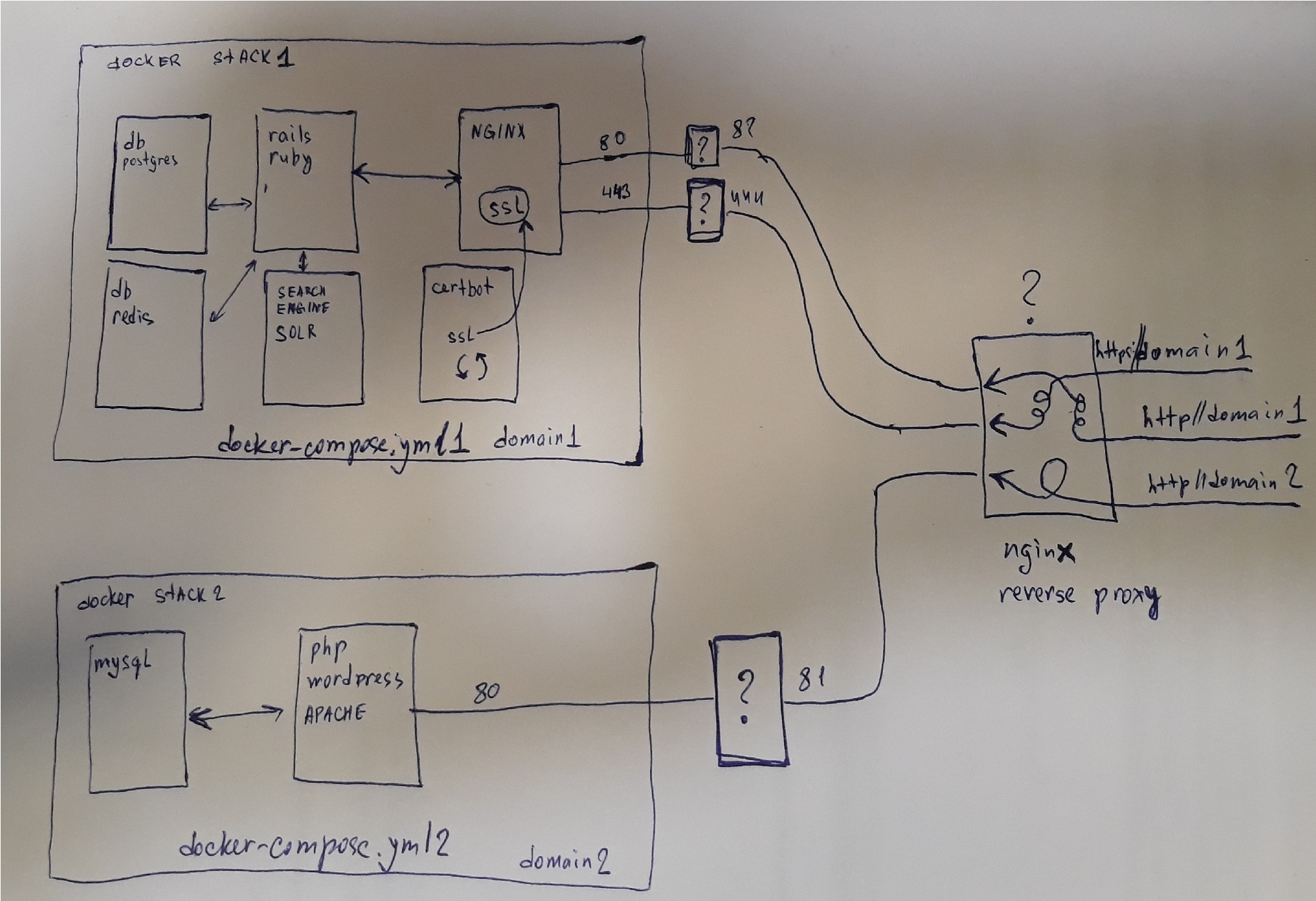Answer the question
In order to leave comments, you need to log in
How to host multiple sites on your server?
I already asked a question similar to this one, but I will add and clarify it. Here is an updated block diagram: 
My old question:
Good afternoon, there is a server on which the rail application was running. Nginx is used as a web server and listens on ports 80 and 443. The whole economy is stuffed into containers. Now I have written a blog on WordPress and I want to host it on the same server. I downloaded the official images, raised the containers. Apache is there. SSL will not be used on the blog. Please tell me how to set up the system. I am providing a block diagram. I do not understand, for example the following things. Do I need two webservers and apache and nginx. Apache is immediately built into the official docker image and works out of the box. Nginx set up for a long time, there is ssl. It jars me that I have to edit the nginx configs in STACK1 indicating that there is STACK2 - this is somehow not kosher, all of a sudden I will have to spread these sites to different servers in the future. I want that in the settings of site1 and its web server only site1 is mentioned and site2 is not touched. Or will it not work? Or maybe another one is placed behind these web servers, which decides where to go to the request to nginx or apache. Has anyone done something similar and what is the best way to do it?
Answer the question
In order to leave comments, you need to log in
I would not put it on one server, but put it on two at once.
It seems to be faster and more practical.
Didn't find what you were looking for?
Ask your questionAsk a Question
731 491 924 answers to any question